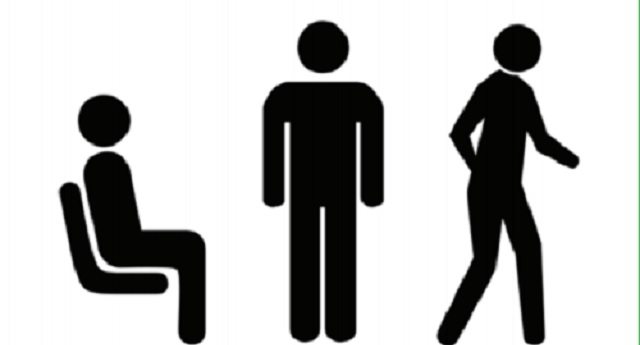
How do they affect your memory?
Kampala, Uganda | MARIA COHUT | Previous research has shown that exercise is beneficial for the brain and that it helps treat depression and prevent cognitive decline. So, what is the importance of posture and movement for the brain? A new study investigates.
Many studies have argued that some level of exercise is beneficial when it comes to protecting cognitive function and that leading a sedentary lifestyle will negatively affect a person’s brain.
For instance, one study covered on Medical News Today earlier this year showed that aerobic exercise helps preserve brain health, keeping neurodegenerative diseases, such as dementia, at bay.
Research from last year even suggested that walking 4,000 steps each day can boost cognitive function in older adults.
Another recent study supported these findings from the reverse perspective, explaining that too much sitting harms the temporal lobe, an area of the brain that plays an essential role in processing memories and language.
Now, three researchers from Ludwig‐ Maximilians‐University Munich in Germany — Gordon Dodwell, Hermann J. Müller, and Thomas Töllner — have found new evidence that aerobic exercise protects the brain.
Furthermore, their new study shows how sitting, standing, and walking each impact visual working memory, which is the brain’s ability to store visual information spontaneously, for use in a current task.
The study’s findings appear online in the British Journal of Psychology.
Moderate activity vs. no activity
“Acute aerobic exercise has been found to influence cognitive performance both subsequently and concurrently (during and after exercise),” the scientists write in the study paper.
“However, the influence on executive performance during acute exercise is less clear, with several accounts providing contradictory theory and evidence regarding the direction of effects,” the authors add.
For this reason, they decided to use electroencephalography (EEG) — a technique that allows researchers to monitor a person’s brain activity by recording electrical impulses — to see how people would perform on visual memory tasks while in a passive posture, or while physically active.
Exercise could benefit early-onset Alzheimer’s
The team recruited 24 participants who undertook EEG testing as they performed the memory task in different conditions: while seated on a stationary bicycle, while pedaling, while standing on a treadmill, and as they were walking on a treadmill.
Lead author Thomas Töllner and colleagues found that the participants’ visual working memory seemed to work best when they were cycling or walking, rather than seated or simply standing.
Moreover, when it came to posture, the researchers observed that standing helped minimise mistakes as the participants performed their task.
“Our behavioral results indicate that both acute aerobic exercise and upright posture expedited the overall speed of processing as compared to passive and seated conditions, while upright posture additionally served to reduce error rates,” the authors write in their paper.
What happens in the brain?
Based on the EEG measurements, as well as the participants’ performance on the visual working memory tasks, the researchers suggest that the brain areas that may get a boost during moderate aerobic exercise are the frontoparietal network (the brain’s “attention hub”), and the dorsolateral prefrontal cortex (key to working memory and selective attention).
In short, the brain’s executive function networks appear to benefit during, and not just after, aerobic exercise.
This, the team argues, contradicts existing models which have suggested that “exercise disengages the higher-order functions of the prefrontal cortex” due to limited energy resources.
“Our findings hold implications not only for the field of cognitive psychology, wherein our knowledge has been primarily derived from seated, resting participants, but also for our understanding of cognitive performance at large.”
“Although modern society has evolved to become more and more sedentary, our brains may nevertheless perform best while our bodies are active,” Töllner speculates.
****
Source: Medical News Today
 The Independent Uganda: You get the Truth we Pay the Price
The Independent Uganda: You get the Truth we Pay the Price


